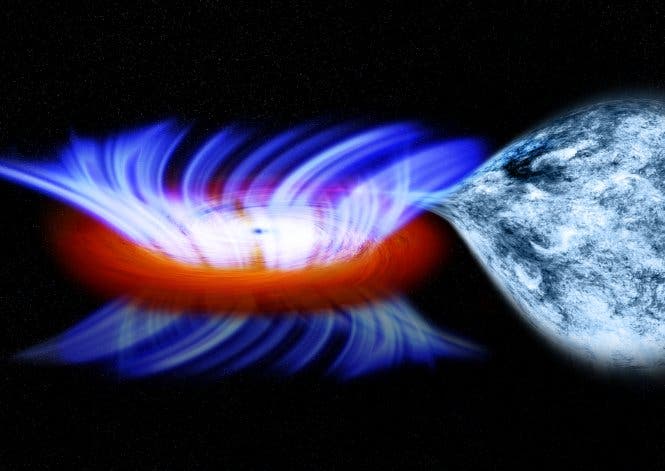
Astronomers at NASA‘s Chandra X-ray Observatory have come across a true astronomical oddity at the outskirts of the Milky Way, a stellar-mass black hole which exerts the fastest winds ever observed so far in its class – so fast that it rivals those blown by supermassive black holes, which often are billion times more massive.
The Chandra researchers clocked in 20 million mph winds, or about 3 percent of the speed of light. That’s 10 times faster than the previously record-holder for wind velocity seen from a stellar-mass black hole. Scientists estimated IGR J17091’s wind speeds using a spectrum made by Chandra in 2011.
“This is like the cosmic equivalent of winds from a Category 5 hurricane,” study lead author Ashley King, of the University of Michigan, said in a statement. “We weren’t expecting to see such powerful winds from a black hole like this.”
The stellar-mass black hole powering this super wind is known as IGR J17091, a binary system in which a sun-like star orbits the black hole, located 28,000 light years away from Earth. A stellar-mass black hole is formed when an extremely massive star, typically at least ten times the mass of the sun, collapses.
“It’s a surprise this small black hole is able to muster the wind speeds we typically only see in the giant black holes,” says Jon M Miller, also from the University of Michigan. “In other words, this black hole is performing well above its weight class.”
What’s really exciting about IGR J17091 is that it emanates cosmic winds whose velocity is very close, if not over in some cases, to those linked to supermassive black holes, that have a mass millions or billions of times higher. What’s interesting to note is that the aforementioned black hole wind, which comes from a disk of gas surrounding the black hole, may be carrying away more material than the black hole is capturing.
“Contrary to the popular perception of black holes pulling in all of the material that gets close, we estimate up to 95 percent of the matter in the disk around IGR J17091 is expelled by the wind,” says King.
Unlike winds from hurricanes on Earth, the wind from IGR J17091 is blowing in many different directions, and this pattern allows for material to flow in highly unfocused beams perpendicular to the disk, often at nearly the speed of light. Astronomers claim that responsible for producing both winds and jets are black hole disks’ magnetic field, whose geometry and rate at which material falls towards the black hole influence them in a directly proportional manner.
source NASA






